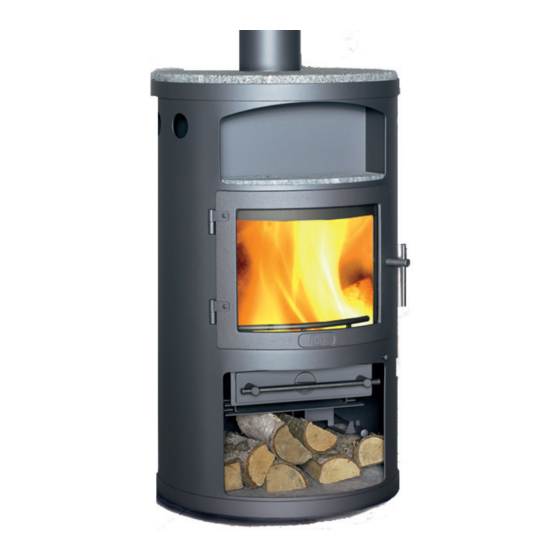
Summarization of Contents
INSTALLATION INSTRUCTIONS
Safety clearances
Regulations for stove installation, chimney connection, and local rules. Importance of consulting chimney sweep.
Distance regulations
Guidelines for placing the stove near flammable and non-flammable walls. Minimum gaps specified.
Warning
Caution about hot stove surfaces, danger to children/elderly, and storing flammable materials near the appliance.
IMPORTANT
Key installation points: chimney sweeping access, room ventilation, extraction fans, and air vent covers.
The floor
Requirements for the floor surface to support the stove's weight and be non-flammable.
The chimney connection
Chimney opening size requirements and adherence to national/local regulations for proper connection.
Connection to a brick chimney
Method for connecting to a brick chimney using a thimble, flue gas pipe, and sealing fireproof material.
Connection to a steel chimney
Guidelines for connecting to a steel chimney, including flue gas spigot placement and roof support.
Draft conditions
Factors affecting chimney draft, leading to smoke emission or poor combustion, and conditions for good draft.
Instructions for use
First firing
Initial hardening process of the stove's coating, requiring ventilation and specific firing steps for the first use.
Fuel
Guidance on approved wood fuel, what to avoid (driftwood, refuse), and the importance of dry, seasoned wood.
Chimney fires
Procedure to follow in case of a chimney fire, including closing vents and contacting the fire department.
Regulating the airflow
Explanation of primary and secondary airflow controls for managing the fire and achieving optimal combustion.
Lighting
Steps for igniting the stove, including using firelighters, leaving the door ajar, and ensuring initial chimney heating.
Refiring
How to add fuel to an existing ember bed, manage airflow, and achieve efficient combustion with a steady flame.
Reduced burning
How to operate the stove for intermittent use or reduced output by adjusting fuel volume and airflow.
Optimal firing
Achieving maximum effect and clean glass by correctly using primary and secondary air for flue gas ignition.
Risk of explosion
Warning about potential explosion risk from excess gas due to insufficient air supply when adding fuel.
MAINTENANCE
Cleaning the glass
How to remove soot from the viewing window, often caused by incorrect firing or wet wood.
















Need help?
Do you have a question about the Scan Line 16 and is the answer not in the manual?
Questions and answers